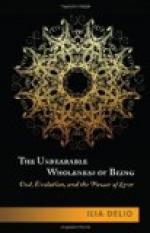(b) The Queen of Heaven.
During the first two hundred years Mary did not occupy a prominent place in the Christian communities; even in the fourth century she was still regarded as a human woman and denied divinity by St. Chrysostom, who reproached her with vainglory. But in proportion as Christ transcended humanity, and was more dogmatically and formally interpreted by the Church—more especially the Greek Church—the desire for a mediator between the wrathful Deity and sinful humanity grew more pronounced, a mediator who, although a human being, could be endowed after the manner of the ancient demi-gods with super-human virtues. The Mother of the Saviour gradually assumed this position. She had been an earthly woman, born of earthly parents, and would be able to understand human needs and wishes, and she had become the Mother of God. Would not her intercession have weight with the Son of God? Simultaneously with the growing recognition of asceticism, the doctrine of the immaculate conception gained ground; in the course of time this moment was more and more emphasised, and virginity was set up as an ideal.
St. Athanasius (fourth century) had written: “What God did to Mary is the glory of all virgins; for they are attached as virginal saplings to her who is the root.” At the close of the fourth century a long and bitter controversy arose over the question as to whether Mary had remained a virgin after the birth of Jesus. St. Ambrose, St. Jerome and St. Augustine were in favour of this new doctrine. St. Ambrose, the founder of Western music, was the first to praise her perfection in the Latin tongue, and St. Augustine in his treatise De Natura et Gratia, maintained that she was the only human being born without original sin. This was the first important step towards the stripping of the Saviour’s mother of her humanity, and establishing her as a divine being. St. Irenaeus contrasted Eve, the bringer of sin, with Mary, the second Eve, the bringer of salvation, and St. Ambrose said: “From Eve we inherited damnation through the fruit of the tree; but Mary has brought us salvation through the gift of the tree, for Christ too, hung on the tree like a fruit.”
Hitherto Mary had not been worshipped; all prayers had been addressed to God and to Christ. The idea of approaching her in prayer appeared for the first time in a pamphlet entitled “On the Death of Mary,” written about the end of the fourth century, and Gregory of Nazianz pictured Mary in Heaven, caring for the welfare of humanity. The fourth and fifth centuries produced the first hymns to the Virgin, written in Syriac; but orthodox bishops objected to her deification; St. Epiphanus (end of fourth century) said: “Let us honour Mary by all means, but let us worship only the Father, the Son and the Holy Ghost.”
This was the position of the evangelical and historical Mary before the famous and decisive Council of Ephesus.




